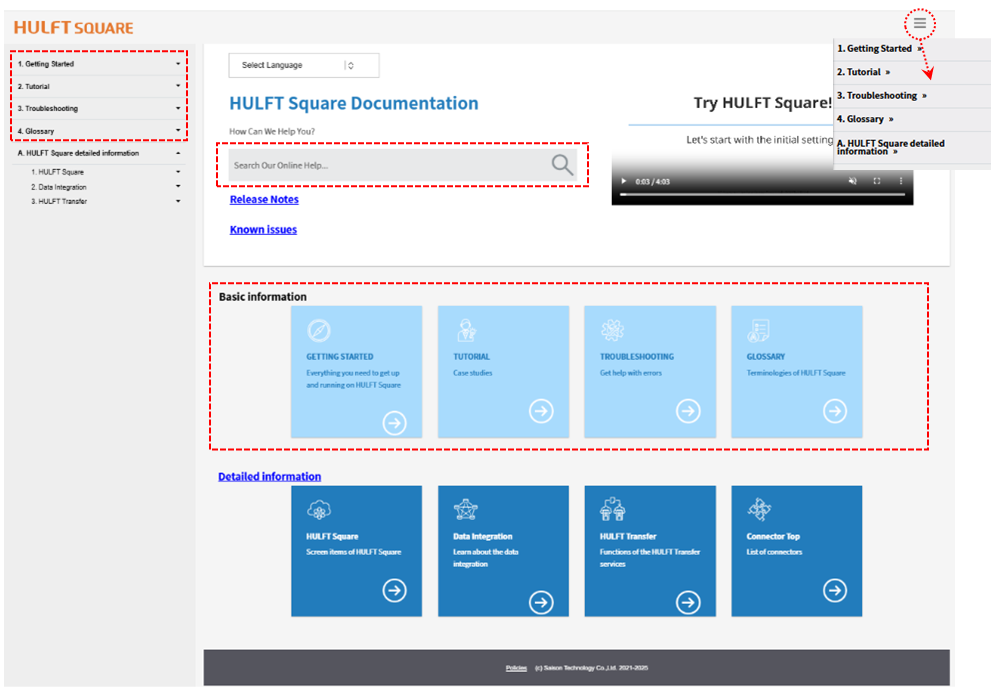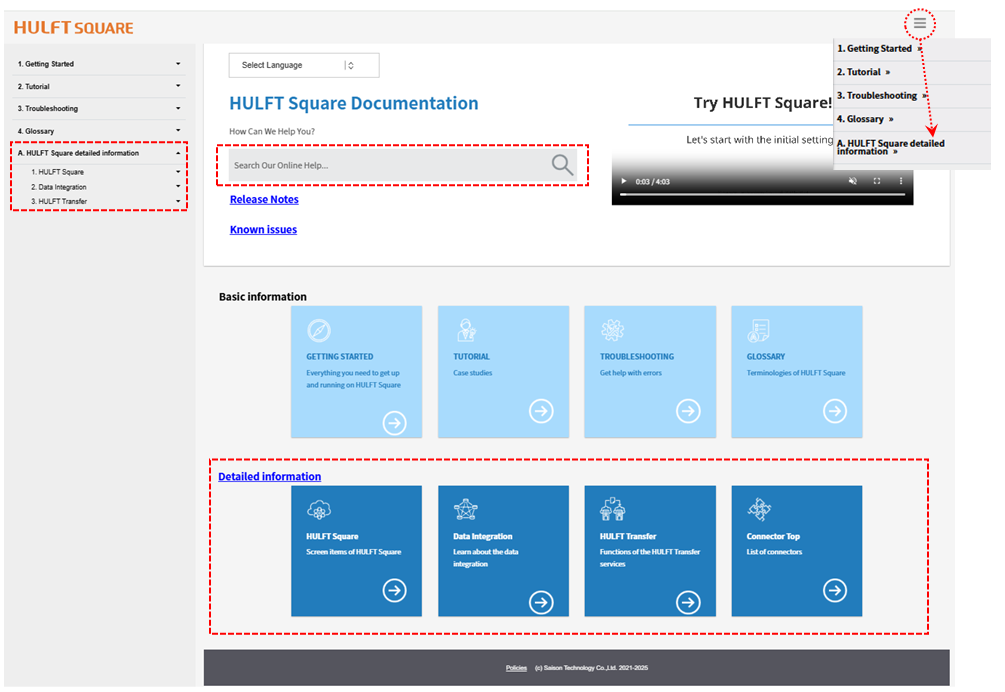About the documentation
Disclaimer
The functions and contents of the HULFT Square Documentation, as well as the functions and GUI of HULFT Square described in the documentation may be changed in the future.
Also, check Known issues.
Site map
The documents of HULFT Square are categorized into the two layers—basic layer and advanced layer.
Basic layer
The basic layer is for users new to HULFT Square and includes the following contents:
- Getting Started
-
The basic knowledge of HULFT Square, the basic tasks needed to run data integration flow, and how to use the documentation are described.
- Tutorial
-
You can learn how to use HULFT Square, such as creating data integration scripts for typical integration scenarios or switching integration settings between production and development environments.
- Troubleshooting
-
You can check common problems and message codes to find solutions.
- Glossary
-
Key terms of HULFT Square are described.
There are several ways to access the basic layer.
-
Use the table of contents displayed on the left side or the menu icon on the right side
-
Select the Basic information tiles at the bottom of the HULFT Square Documentation top page
-
Search for keywords with the search box

Figure 1.17 Accessing the basic layer contents
Advanced layer
The advanced layer includes the following information about features, operations, and component references:
- HULFT Square
-
Management operations of HULFT Square is described.
- Data Integration
-
Detailed description of data integration and references of connectors and Mappers are included.
- HULFT Transfer
-
Detailed description of transfers using HULFT Transfer is included.
- Connector Top
-
Detailed description of connectors used in HULFT Square is included.
There are several ways to access the advanced layer.
-
Use the table of contents displayed on the left side or the menu icon on the right side
-
Select the Detailed information tiles at the bottom of the HULFT Square Documentation top page
-
Search for keywords with the search box

Figure 1.18 Accessing the advanced layer contents